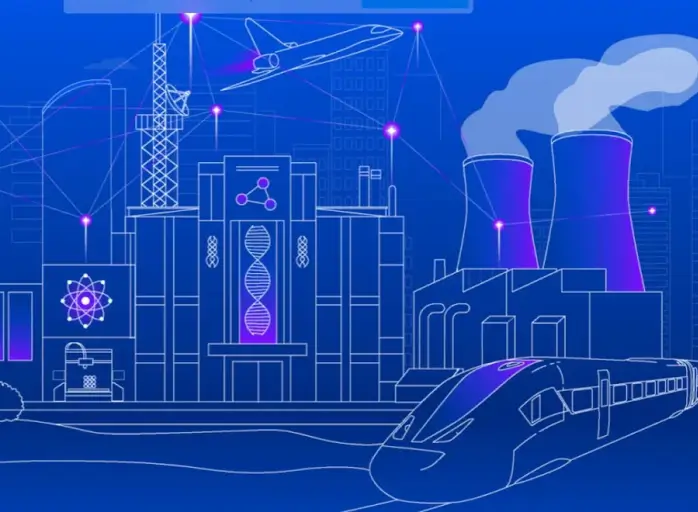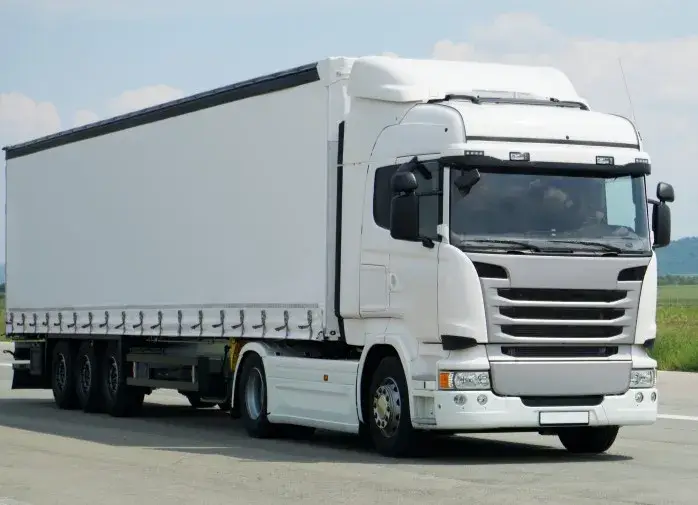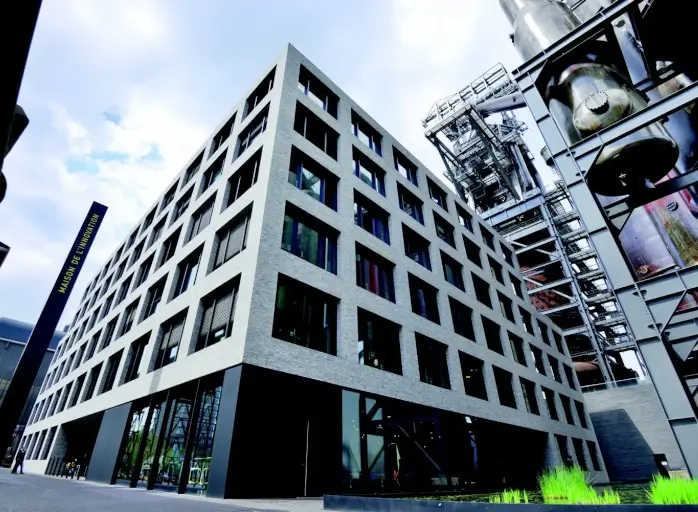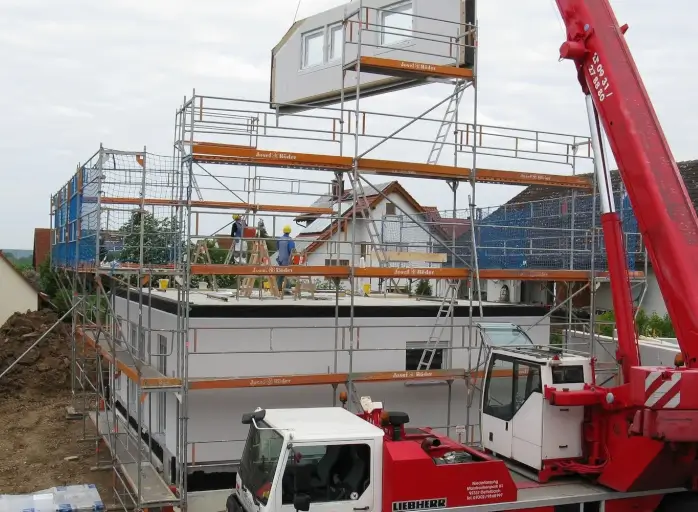
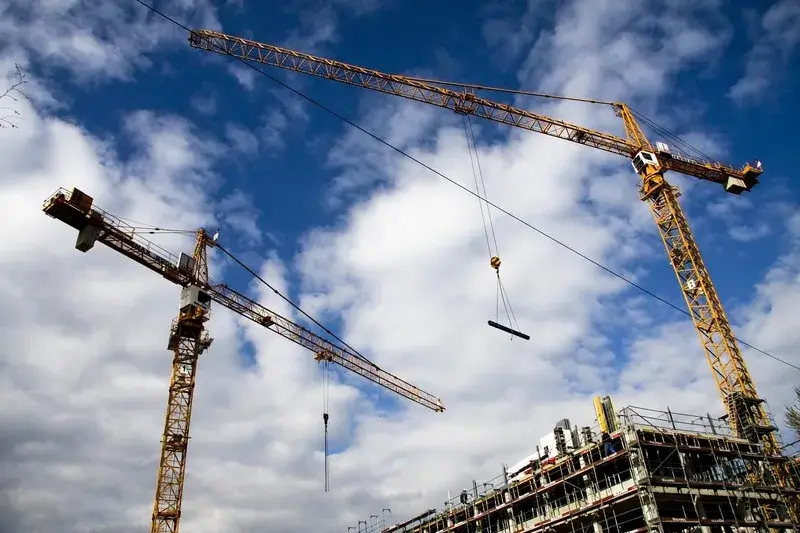
Ideas and support for sustainable construction
At a crucial time for the construction sector, there are solutions available to help organisations adopt a more ecological and sustainable approach.
 Jean-Michel Gaudron
Jean-Michel Gaudron
The construction sector, which represents 6% of GDP and 10% of employment in Luxembourg, is among the largest emitters of greenhouse gases. It accounts for nearly 40% of global CO₂ emissions and more than a third of worldwide energy consumption. In this context, the notion of “sustainable construction” constitutes a major challenge, especially as forecasts indicate that 70% of the world’s population will be living in urban areas by 2050.
In addition, cities are increasingly confronted with extreme weather events: heatwaves, droughts, tornadoes, floods, and more. This situation requires a radical transformation in the way buildings are designed, constructed and renovated. The resilient cities of tomorrow will have to integrate infrastructure capable of adapting to climate shocks, drastically reducing their carbon footprint while ensuring the well-being and health of their inhabitants.
Research is examining possibilities such as reusing, recycling or recovering materials at the end of their lifecycle, so that they can be reinjected as raw materials into the construction process. This was explained by Prof. Matthias Sulzer, member of the Steering Committee, Head of the Department of Engineering Sciences and co-head of the Built Environment Research Priority Area at EMPA, the Swiss Federal Laboratories for Materials Science and Technology, who delivered a keynote speech at the event “BIMLux – Sustainable Construction for Resilient Cities” held in Luxembourg on 12-13 November.
Producing carbon-negative concrete – the world’s most widely used artificial material – is another avenue currently being explored in Switzerland, for example, which could eventually transform cities into vast reservoirs capable of storing excess atmospheric CO₂.
Startups already active
While awaiting the large-scale deployment of this long-term research, many initiatives are already contributing their small yet meaningful part to this vast endeavour.
The Minister for the Economy, SMEs, Energy and Tourism, Lex Delles, experienced this entrepreneurial dynamism first-hand at the Smart City Expo World Congress in Barcelona, where a national pavilion showcased 15 Luxembourg exhibitors. “Among these companies driving the smart city movement, some are already offering solutions to problems I didn’t even know existed! And even cities themselves are not always aware that such turnkey solutions are available.”
One of these companies, Mabu Concept, was even a finalist in the World Smart City Awards in the “Enabling Technologies” category. Its unified IoT platform sensora.lu manages sensors connected by long-range radio frequency (over 10 km), enabling real-time monitoring of energy consumption, water levels, weather stations and more.
Cities themselves are not always aware that such turnkey solutions exist. Lex Delles, Minister for the Economy, SMEs, Energy and Tourism
Several startups supported by Luxinnovation also had the opportunity to present the diversity of their models during the “BIMLux – Sustainable Construction for Resilient Cities” event:
- CRAB Traceability Systems transforms complex waste streams into clear, actionable data using AI-enabled mobile camera systems to facilitate and optimise collection;
- Äerd Lab produces bricks and decorative elements in 3D-printed clay;
- AmpXVolt intelligently integrates electric vehicle charging technologies into buildings;
- Syslor develops technologies to monitor underground networks using 3D digital twins and augmented reality;
- Twisco implements semantic digital twins to help construction teams reduce material and time waste on building sites by optimising just-in-time logistics;
- RecycleRewards offers a blockchain-based software platform to monetise recyclable waste;
- NBenefit$ proposes a decision-making tool for urban planning and construction based on nature-based solutions.
All these solutions already exist or are entering their final stages of development in Luxembourg. Many of them receive support from Luxinnovation. The construction sector represents a significant pool of projects for the agency, particularly within the collaborative approach essential to their successful implementation.
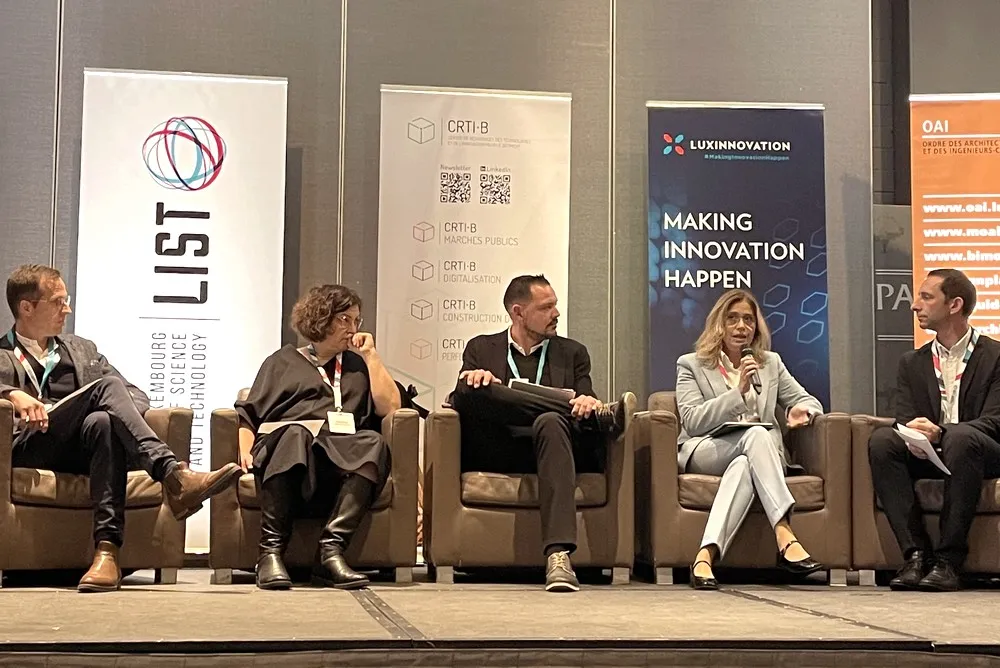 Support at every step
Support at every step
“This culture of collaboration is not necessarily natural in a sector as fragmented as construction,” says Daniela Cattolico, Head of National Business Relationship at Luxinnovation. “We help organisations through this transition by offering various programmes – Fit 4 Sustainability, Fit 4 Digital, Fit 4 Innovation and Fit 4 AI – which allow them to assess their level of maturity and receive personalised support. On a more operational level, one of our missions is to support companies in submitting projects and preparing applications that will enable them to access national or European funding.”
Good structuring gives confidence to those who will have to finance the project. Daniela Cattolico, Luxinnovation
Everything starts with an idea brought by the company and its validation as an innovation by Luxinnovation, which must ensure that the industry genuinely needs it and and assess what it will be able to get out of it in concrete terms. From there, the project’s very structure – in terms of human and financial resources – can be established.
“Good structuring gives confidence to those who will have to finance the project,” explains Ms Cattolico, who sees the financial aspect as far more than just a matter of money. “The financing aspect must be seen as a genuine strategic lever for innovation, enabling the structuring and challenging of an idea, as well as the identification and anticipation of risks. It acts as an accelerator of synergies that ultimately turns ideas into reality and enables the next steps to be taken.”
Luxinnovation’s role is then to inform companies on how to structure their applications and submit them to the Ministry of the Economy or, in the case of European projects, to the European Commission.
Assessments and roadmaps
In practice, the services offered by the national innovation agency also allow companies to assess their progress in terms of carbon footprint or digitalisation.
While the energy audit analyses an organisation’s energy performance in depth, the carbon footprint measures all the greenhouse gas emissions generated by its energy consumption, waste, travel, fixed assets, inputs (goods, materials, services), as well as those linked to the use and end-of-life of products.
For any company wishing to improve its performance while anticipating regulatory and market developments, the energy audit and the carbon footprint are genuine decision-making tools.
“An energy audit or a carbon footprint assessment makes sense for environmental, economic and strategic reasons,” says Emmanuelle Kipper, Senior Advisor at Luxinnovation. “In addition to the legal obligations that may arise from the European CSRD directive, these studies – which are even more effective when combined – make it possible to identify priority actions whose implementation delivers tangible benefits: reduced energy costs, access to new market opportunities, better risk anticipation, strengthened brand image and improved corporate transparency.”
An energy audit or a carbon footprint assessment makes sense for environmental, economic and strategic reasons. Emmanuelle Kipper, Luxinnovation
These studies also make it possible to measure the real impact of implementing the various recommendations. They therefore do not merely establish a diagnosis, but also enable the definition of a genuine medium- and long-term energy strategy, based on relevant technological investments and the sustainable optimisation of existing installations. This is clearly a decisive asset in guiding the company’s transition.
Initiatives such as the Klimapakt fir Betriber, led by Klima-Agence and Luxinnovation, or the SME Sustainability Packages of the House of Entrepreneurship, complement Luxinnovation’s schemes to good effect.
Digital and environmental maturity
Supporting the assessment of companies’ digital maturity is also one of Luxinnovation’s activities. And applying this approach to the construction sector is becoming increasingly relevant at a time when BIM models are expanding, digital twins and connected devices are being deployed, 3D models are becoming more widely used, and even drones are being employed for inspections – not to mention the widespread use of artificial intelligence and data analysis for project planning and development.
“Good digitalisation enables faster collaboration and fewer construction errors,” explains Lionel Cammarata, Senior Advisor at Luxinnovation. “It also makes it easier to track costs and progress in real time and contributes to improved sustainability and lifecycle management. It is an obvious gateway to the sector’s industrialisation.”
A digital maturity assessment consists of a quick and simple evaluation of an organisation’s progress in its digital transformation, without requiring the mobilisation of extensive resources. Covering six dimensions (digital strategy, digital readiness, human resources, data governance, automation and intelligence, and sustainability), it provides a rapid overview of digital maturity, identifying strengths and areas for improvement and raising awareness of digital issues among teams. “It then becomes easier to prioritise short- and medium-term actions and to support the creation of a transformation plan or roadmap,” notes Denis Strobel, Business Relationship Manager at Luxinnovation.
These assessments form part of the activities of the Luxembourg Digital Innovation Hub, which is free of administrative procedures and entirely financed by European funds.
Multiple tools
There is no shortage of tools available to companies: the “Fit 4” performance programmes (Fit 4 Digital, Fit 4 Innovation and the most recent one, Fit 4 AI) managed by Luxinnovation – for analysis and roadmap development – alongside the SME Packages (Digital or AI) from the House of Entrepreneurship or the Chamber of Skilled Trades and Crafts for implementation. The same applies to the various public aid mechanisms.
“A company that has clearly identified the need to redesign its website and define a social media strategy will opt for an EMS Packages – Digital, whereas another that feels overwhelmed by the complexity of digital technology, unsure which solutions to adopt or how to implement them, will be better served by participating in Fit 4 Digital,” explains Rémi Grizard, Senior Advisor at Luxinnovation. “Support for process and organisational innovation can also enable a company to thoroughly review its business model using advanced AI tools, for instance… while a company wishing to explore AI solutions and determine which ones could strengthen and enhance its performance will gain greater clarity through a Fit 4 AI programme.”


